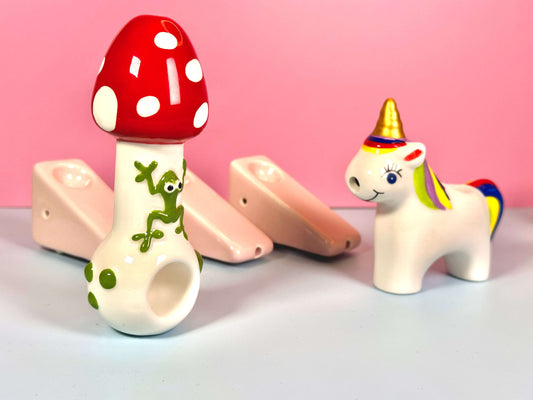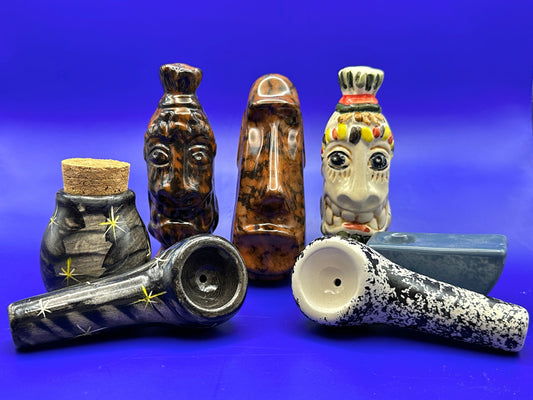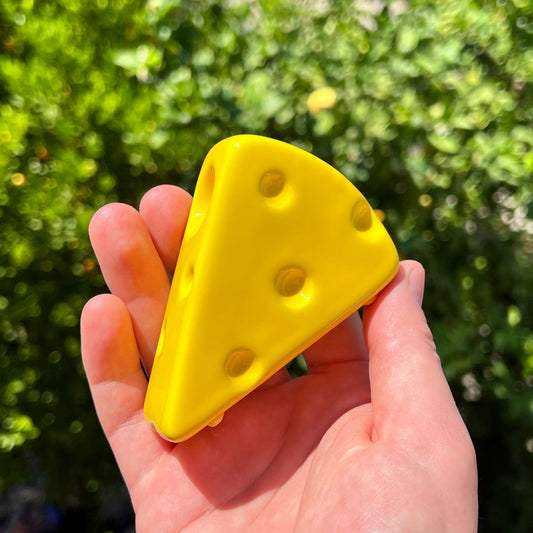The history of weed pipes stretches back thousands of years, encompassing a rich and diverse array of cultures and civilizations. From ancient rituals to modern-day enjoyment, these smoking devices have evolved in design and function over time. Let's take a journey through the fascinating history of weed pipes, exploring their origins, cultural significance, and the development of various styles.
The earliest evidence of smoking pipes can be traced back to ancient civilizations. The ancient Egyptians, for instance, were known to use reed pipes to smoke herbs, including cannabis. These pipes were simple in design, consisting of a hollow reed with a small bowl at one end.
In ancient China, the use of pipes for smoking cannabis was prevalent during the Tang Dynasty (618-907 AD). These pipes, called "bang," were crafted from bamboo or bronze and had a central chamber to hold the herb. They were often adorned with intricate designs and symbols.
As trade routes expanded, the use of smoking pipes spread to other parts of the world. In Native American cultures, pipe smoking held deep spiritual and ceremonial significance. Native American peace pipes, or "calumets," were used in gatherings and rituals to forge alliances and offer prayers. These pipes were often crafted from materials such as wood, stone, or clay, and were adorned with feathers, beads, and other symbolic elements.
During the 16th century, European explorers encountered smoking traditions in the Americas and brought the concept of smoking pipes back to their homelands. This marked the beginning of the popularity of tobacco pipes in Europe. These early tobacco pipes were typically made from clay and had long stems. The bowl designs varied, but they generally had a small opening for the tobacco and a mouthpiece for the smoker.
As tobacco consumption became more widespread, so did the evolution of pipe designs. In the 19th century, meerschaum pipes gained popularity among European smokers. Meerschaum, a white mineral with excellent heat-absorbing properties, was carved into intricate shapes and used to create stunning, highly detailed pipe bowls.
The late 19th century saw the emergence of briar pipes, which became the most popular type of smoking pipe. Briar, a dense, heat-resistant wood, allowed for the creation of durable and heat-efficient pipes. These pipes were often fitted with a vulcanite or acrylic mouthpiece for comfort.
In the 20th century, the counterculture movements of the 1960s and '70s sparked a resurgence of interest in cannabis and alternative smoking devices. Weed pipes, often made from glass, gained popularity among a new generation of smokers. Glass pipes offered a cleaner taste, better heat resistance, and the ability to see the smoke as it traveled through the pipe.
With the advancement of glassblowing techniques, artists began creating intricate and artistic designs for weed pipes. The "spoof" or spoon pipe became a popular choice due to its simplicity and portability. These small, handheld pipes featured a bowl on one end and a mouthpiece on the other, often adorned with colorful patterns or unique shapes.
In recent years, the advent of technology has led to further innovation in weed pipe designs. Vaporizers, which heat the cannabis without burning it, have gained popularity as a healthier alternative to traditional smoking. These devices utilize advanced heating systems and can come in various forms, from portable pens to desktop units.
Today, weed pipes continue to evolve in both design and materials. Glass pipes remain popular for their aesthetic appeal and smooth smoking experience, while other materials such as metal and silicone offer durability and portability.
The history of weed pipes is a testament to the cultural significance of smoking rituals and the ever-changing preferences of smokers. From the ancient traditions of indigenous cultures to the modern designs of today, these smoking devices have come a long way.








